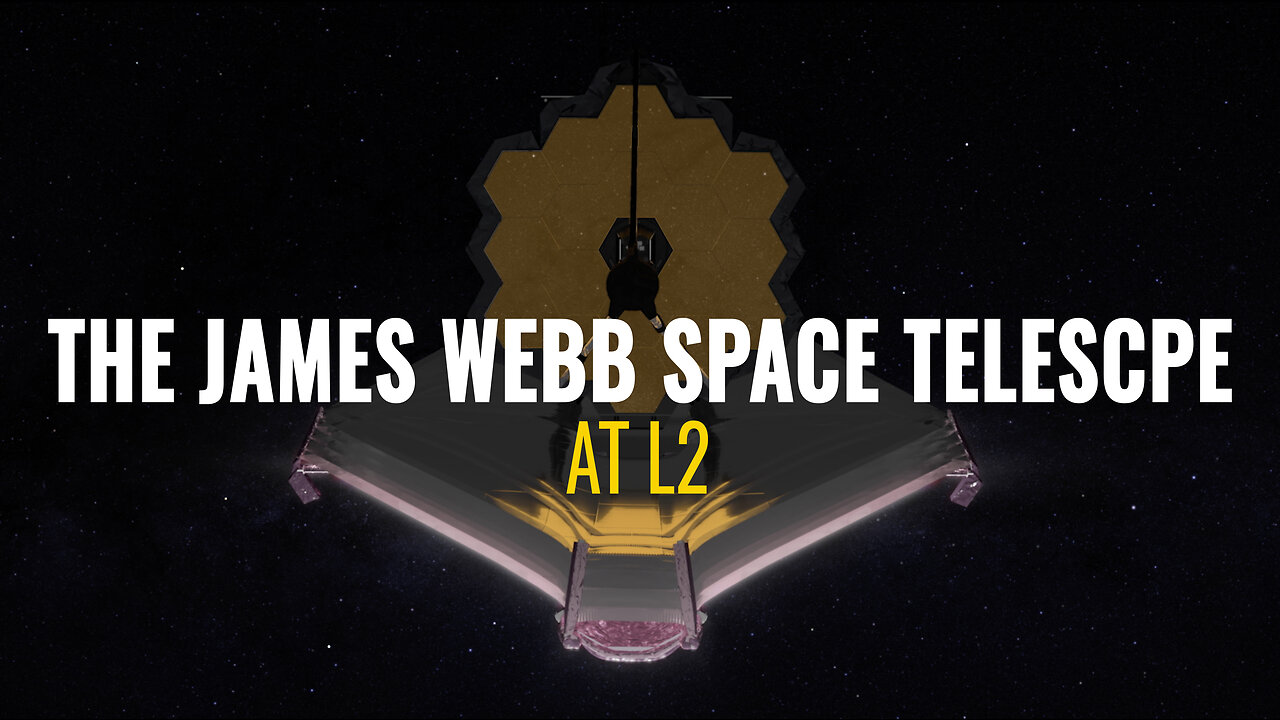Premium Only Content

The James Webb Space Telescope at L2
After launch, the James Webb Space Telescope will travel to its orbital destination. Webb will perform its science mission while orbiting a location in space, called the second Lagrange point, or L2 for short. L2 is located one million miles from Earth. As Webb orbits L2, the telescope stays in line with Earth as it travels around the Sun. L2 is a point where the gravitational influences of the Earth and Sun balance the centripetal force of a small object orbiting with them. The telescope's optics and instruments need to be kept very cold to be able to observe the very faint infrared signals of very distant objects clearly. This location is perfect for Webb's sunshield to block out light and heat from the Sun, Earth, and Moon. Unlike the Hubble Space Telescope, Webb's orbit keeps the spacecraft out of the Earth's shadow making L2 a thermally stable location for the observatory to operate at. Webb will operate within its field of regard. The "field of regard" refers to the angles the telescope can move while staying in the shadow of the Sun. Each of Webb's instruments has its own field of view. The field of view is the area of sky an instrument can observe. Webb's fine steering mirror is moved so that an object can be observed by the different instruments. This prevents the whole telescope from having to repoint itself to do so. The Webb Telescope’s commissioning process will be complete approximately six months after launch, at which time Webb start its science mission. Helping to uncover more of the mysteries of our Universe. Released Monday, January 24th, 2022 This video is public domain and along with other supporting visualizations can be downloaded from the Scientific Visualization Studio at: http://svs.gsfc.nasa.gov/13425
Credit: NASA's Goddard Space Flight Center/Michael P. Menzel If you liked this video, subscribe to the NASA Goddard YouTube channel: http://www.youtube.com/NASAExplorer Follow NASA’s Goddard Space Flight Center • Instagram http://www.instagram.com/nasagoddard • Twitter http://twitter.com/NASAGoddard • Twitter http://twitter.com/NASAGoddardPix • Facebook: http://www.facebook.com/NASA.GSFC • Flickr http://www.flickr.com/photos/gsfc
-
 2:23:15
2:23:15
Nerdrotic
4 hours agoA Very Merry Christmas | FNT Square Up - Nerdrotic Nooner 453
14.7K3 -
 1:14:05
1:14:05
Tucker Carlson
4 hours ago“I’ll Win With or Without You,” Teamsters Union President Reveals Kamala Harris’s Famous Last Words
71K230 -
 1:58:31
1:58:31
The Dilley Show
4 hours agoTrump Conquering Western Hemisphere? w/Author Brenden Dilley 12/23/2024
59.7K10 -
 1:09:59
1:09:59
Geeks + Gamers
5 hours agoSonic 3 DESTROYS Mufasa And Disney, Naughty Dog Actress SLAMS Gamers Over Intergalactic
32.7K9 -
 51:59
51:59
The Dan Bongino Show
6 hours agoDemocrat Donor Admits The Scary Truth (Ep. 2393) - 12/23/2024
569K1.72K -
 2:32:15
2:32:15
Matt Kohrs
17 hours agoRumble CEO Chris Pavlovski Talks $775M Tether Partnership || The MK Show
98K27 -
 28:23
28:23
Dave Portnoy
17 hours agoDavey Day Trader Presented by Kraken - December 23, 2024
112K35 -
 59:29
59:29
BonginoReport
7 hours agoTrump, Murder Plots, and the Christmas Miracle: Evita + Jack Posobiec (Ep.110) - 12/23/2024
126K117 -
 2:59:14
2:59:14
Wendy Bell Radio
10 hours agoNothing To See Here
106K67 -
 2:12:18
2:12:18
TheDozenPodcast
1 day agoIslam vs Christianity: Bob of Speakers' Corner
99.8K24